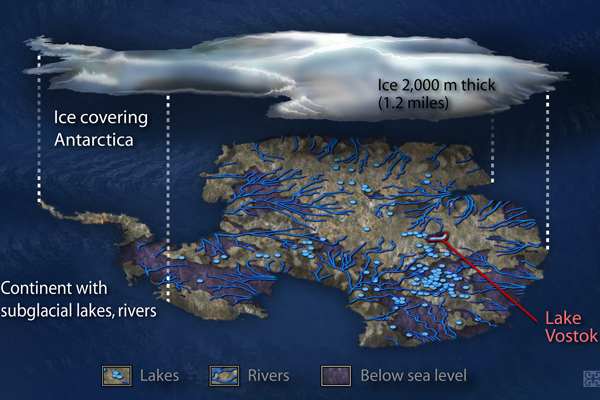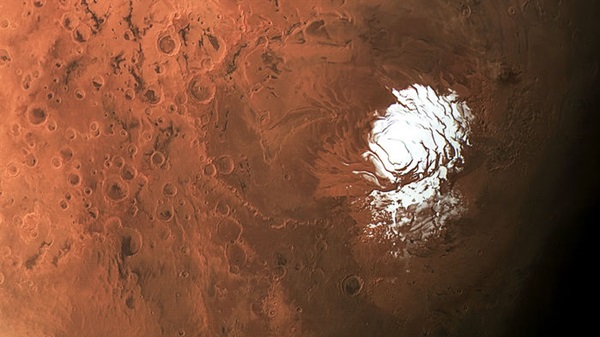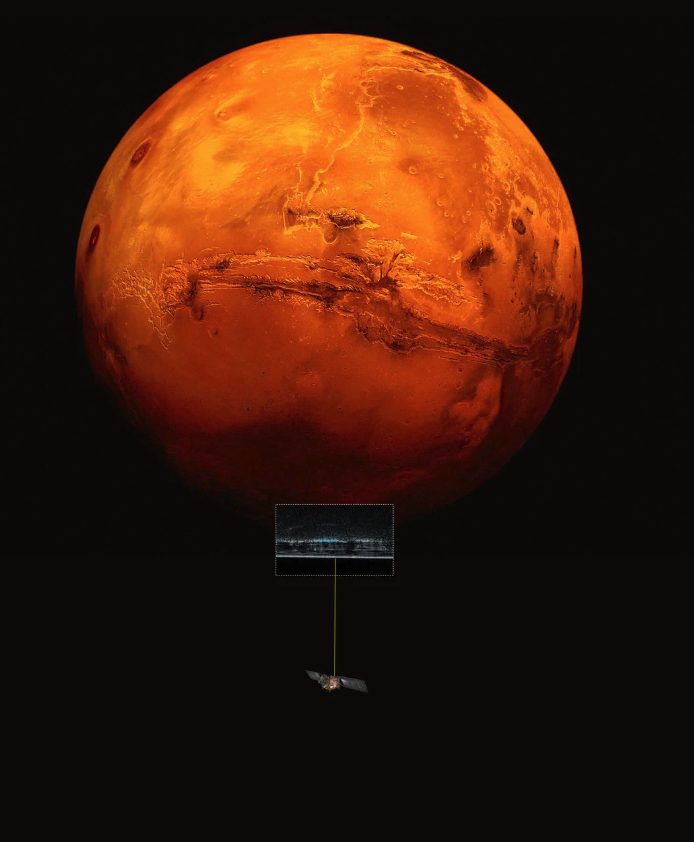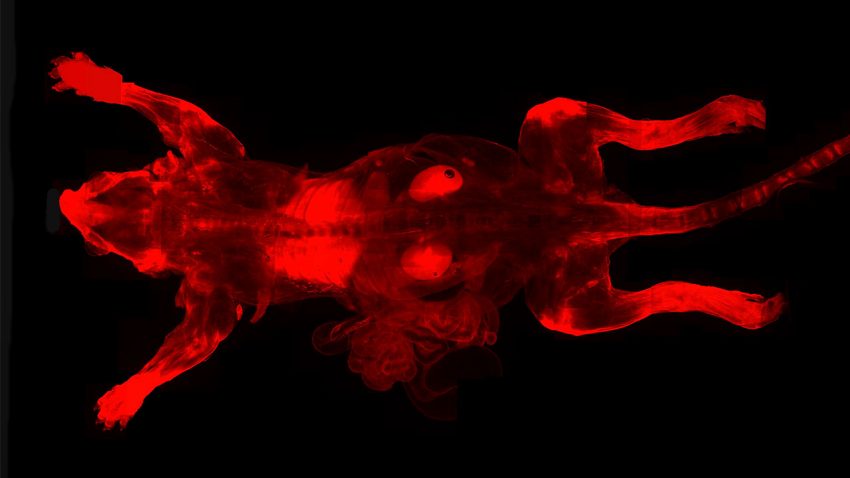Researchers have found evidence of an existing body of liquid water on Mars.
A new paper titled Radar evidence of subglacial liquid water on Mars was published on Science. The article suggests that liquid water may be sitting under a layer of ice at Mars’ south pole.
“Water is considered one of the fundamental requirements for life. This is the first stable body of liquid water ever found on Mars, and it could be considered a potential habitat,” explained Roberto Orosei, a lead scientist at the Institute of Radioastronomy in Italy who analyzed the data.
This discovery is especially amazing because there are underground lakes like this near Earth’s poles, mainly in Greenland and Antarctica. One of these lakes, the subglacial Lake Whillans in Antarctica, isn’t on the surface of the Earth for millions of years. And recently, scientists found bacteria still living there in complete isolation.
The Lake Vostok, underneath miles of ice, has been ice-covered for at least 15 million years. Analysis of the life forms suggests Lake Vostok may harbor a unique ecosystem based on chemicals in rocks instead of sunlight, living in isolation for hundreds of thousands of years.

Scientists have also found microorganisms underground into mines. These microorganisms are related to ancient species that once lived in watery environments. Such migrations raise the possibility of the same thing happening on Mars — as the water retreated, life moved deeper underground.
The best images of water on Mars
You know we believe that science can needs to be visual. If you want to show details and make the reader pay attention in your work, visual resources are a great tool.
Therefore, I selected the best images of this recent discovery.
01. The Mars’ south polar cap, taken with the European Space Agency’s Mars Express orbiter. ESA/DLR/FU Berlin
02. Also, the Mars’ south polar cap and the Mars Express’s color-coded findings superimposed at the site where they were detected. ESA/DLR/FU Berlin
03. And for the last, the European Space Agency’s Mars Express spacecraft searching the planet’s south pole for liquid water. ESA/INAF/Davide Coero Borga
“Follow the Water” has been one of the major goals of NASA’s Mars program. Water is currently driving NASA’s exploration into the outer solar system. Where ocean worlds – like Jupiter’s moon Europa – hold the potential to support life. Even protoplanets like Ceres may explain how water is stored in rocky “buckets” that transport water across the solar system.

Subscribe to our newsletter
Exclusive high quality content about effective visual
communication in science.








